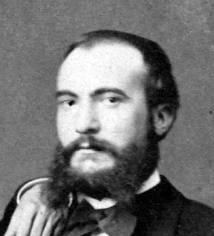Nationality French Known for Cotard delusion Name Jules Cotard | Fields neurology | |
 | ||
Institutions Hospice de la Salpetriere Institution Pitie-Salpetriere Hospital Similar People Jean‑Martin Charcot, Marcel Proust, Stendhal, Leo Tolstoy, Fyodor Dostoyevsky | ||
Influenced by Jean-Martin Charcot | ||
Jules cotard
Jules Cotard (1 June 1840 in Issoudun, Indre – 19 August 1889) was a French neurologist who is best known for first describing the Cotard delusion, a patient's delusional belief that they are dead, do not exist or do not have bodily organs.
Contents
- Jules cotard
- 105 Like the sixth senseonly different The legacy of Jules Cotard
- Education
- Career
- In popular culture
- References
#105 Like the sixth sense…only different: The legacy of Jules Cotard
Education
He studied medicine in Paris and later went on to work as an intern at Hospice de la Salpêtrière, where he worked for, among others, Jean-Martin Charcot.
Career
Cotard became particularly interested in cerebrovascular accidents (commonly known as 'strokes') and their consequences and undertook autopsies to better understand how these affected the brain. In 1869, Cotard left Salpêtrière, and at the outbreak of the Franco-Prussian War, he joined an infantry regiment as a regimental surgeon. Cotard moved to the town of Vanves in 1874, where he remained for the last 15 years of his life. He made particular contributions to the understanding of diabetes and delusions. In August 1889, Cotard's daughter contracted diphtheria and he reportedly refused to leave her bedside for 15 days until she recovered. He eventually contracted the illness himself and died on 19 August.
In popular culture
Jules Cotard served as the real life model for the character of Dr. Cottard in the Marcel Proust novel In Search of Lost Time.
In the film Synecdoche, New York, protagonist Caden Cotard is a reference to the Cotard Delusion.
